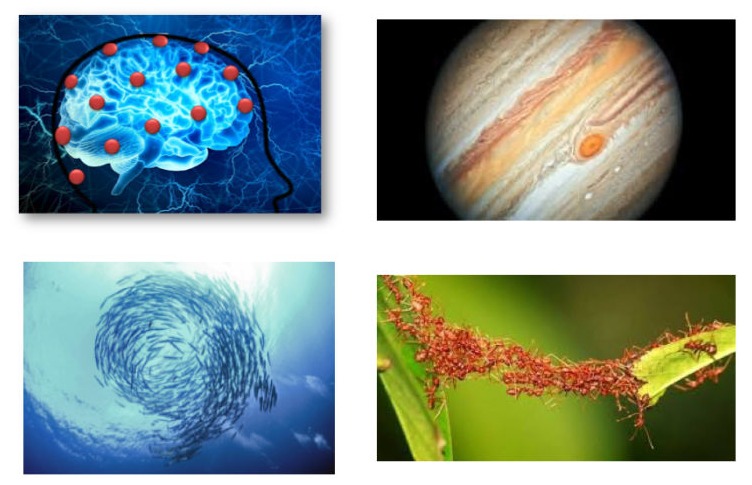
Complex systems consist of a large number of smaller entities that interact with each other – usually in a nonlinear and stochastic manner. Examples of complex systems can be diverse including, but not limited to, coupled neurons in the brain, spatially distributed interacting systems like the movement of tectonic plates in a planet, transportation network of a large metropolitan, online social networks like Twitter and Facebook, and the ocean-atmosphere coupling in the climate system.
Predicting phenomena such as brain epilepsy, climate change and global warming, pandemics, failure of networks involving distributed computing, power or transportation, species extinction in biological ecosystems, earthquakes, bio-mimetic flows and fluid-structure interactions, viral social media posts, forecasting financial crisis, crowd management etc., require a deeper understanding of the overall dynamics of the associated multi physics systems and a complex system approach to investigate it.
Many systems in nature, and the laboratory exhibit complex dynamical behaviour. This range of behaviour ranges from synchronization and coherent or self-organized behaviour, to chaotic behaviour, spatio-temporal intermittency and turbulence. The range of complex systems in which a given kind of behaviour is seen is also vast, e.g. synchronization can be seen in systems ranging from oscillators and wall clocks, to swarms of fire-flies; coherent structures appear across length scales from whorls and tendrils in laboratory flows to the great red spot of Jupiter; pattern formation can be seen in chemical reactions, and sand dunes, as well as snakeskins and animal coats. laminar and turbulent flows are ubiquitous from the ocean to the atmosphere, and self organization is seen from the organization of flower petals to the flocking of birds and schools of fish.

Some of these organising principles can be exposed by using the paradigm of complex networks constructed of nodes connected via links which could be dynamical interactions between individually evolving units. Examples of such systems include chemical reaction and metabolic networks, ecological food webs, computer and communication networks, the Internet and power grids, as well as the contact networks of epidemic spread and social networks such as Facebook and collaboration networks of scientists. Methods of algebraic topology, graph theory and statistical mechanics can be used to study their collective behaviour and the relation between structure and function which is crucial for real life applications.
A new element, in the study of such systems, is the availability of data sets on large scales that were unthinkable even a few years ago. The identification, organization and analysis of such data need to draw on the methods of data mining, artificial intelligence, neural nets and deep learning algorithms. The efficient use of this data in conjunction with the methods of probabilistic and causal analysis can lead to significant improvements in the construction of realistic models, as well as in the prediction of catastrophic events such as earthquakes, power grid collapses, stock market collapses, and pandemics of disease that can occur in such systems. Research in this area has the potential to address global questions of climate change, pandemics, mass migration and ecological disorders, together with the possibility of harnessing technology towards growth and the improvement of life and the environment.